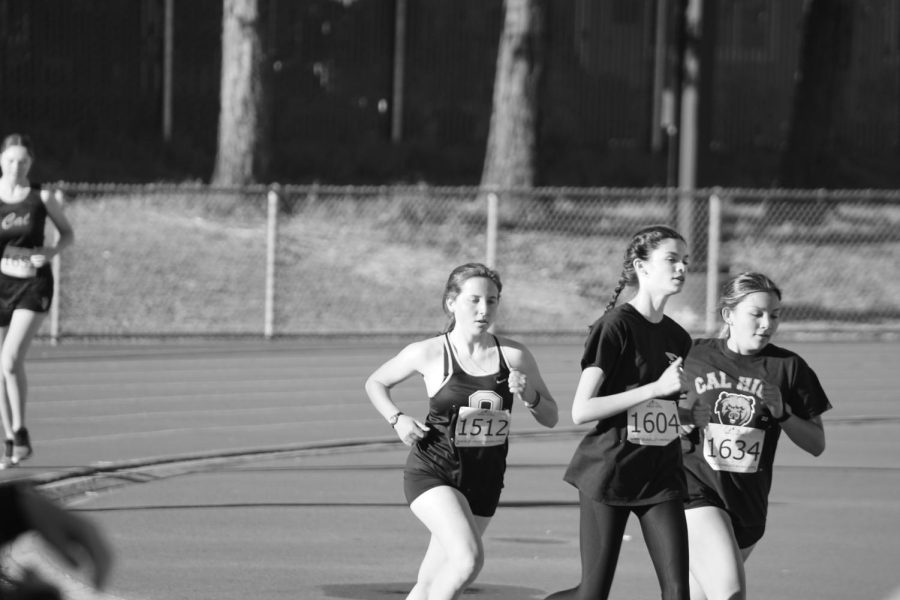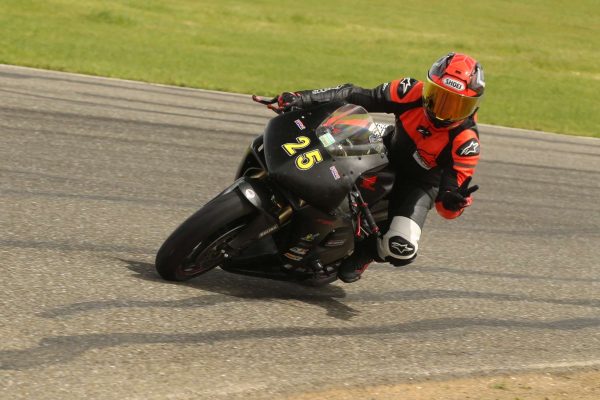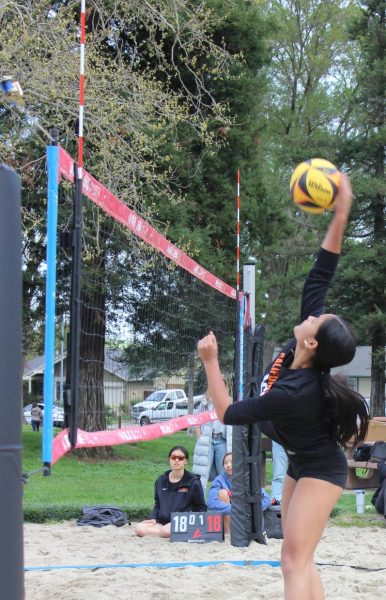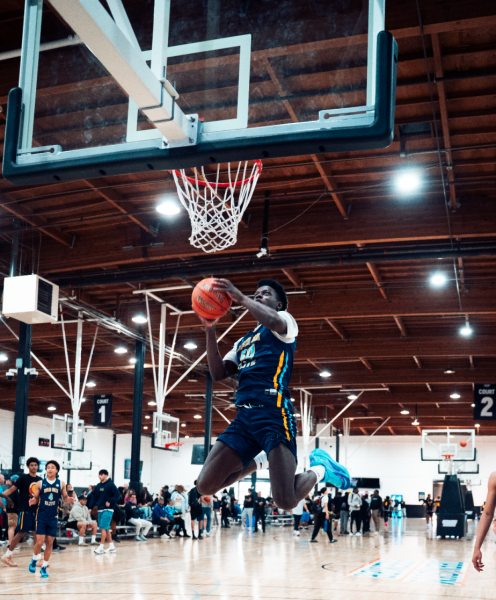Cuts coming for this track season
Cal will limit athletes on team after years of being one of the only no-cut sports.
Grace Dalmada (1604) and Jenna Lightner (1634) lead the pack in this race last year for Cal’s track team. The team will make cuts for the first time this season.
Cal High’s track and field team has long been seen as one of the most accessible sports to athletes because none were ever cut from the program.
But that will change with cuts being introduced this season.
Many factors came into play when deciding to implement track cuts. But track coach Mark Karbo and athletic director Chad Ross highlighted a couple of factors when making their decision to introduce cuts.
“We have had close to 300 team members over the past few years,” Karbo said. “By far the largest sport on campus.”
Karbo believed the large number of participants could potentially hinder the performance of the track team.
“With that many athletes, it is difficult to effectively and safely coach and monitor each individual,” Karbo explained.
Ross also believes that having a large number of track athletes could be a potential problem.
“With the size of participants and the number of coaches we have, it’s kind of [challenging],” Ross said. “With that much demand and so many kids, we had to make it more efficient, more manageable.”
Karbo said that spotty attendance and commitment to the team also have become common problems with such a large number of track athletes.
“A large number of students who are competing for the team haven’t been serious about competing on the team or attending practices and meets,” Karbo said. “They are more interested in getting PE credits or being on the team with their friends.
“We want to encourage athletes who are more dedicated to being a contributing member of the track team.”
Senior Tommy Wedewer said he feels that by reducing the size of the team it may lower interest in track and field.
But Ross said there are going to be benefits to making track cuts moving forward.
“Coaches will be able to get more quality practices,” Ross said. “The desired result is that we are going to get students who are fully committed to competing on the track team.”
Karbo said he believed that having a smaller track team will make practices more enjoyable for athletes because students will be able to receive more individualized coaching.
Karbo is still working on the number of participants that will be allowed for each event and gender.
Although an exact number is still undetermined, Karbo he plans to cut the team by 20-30 percent and wants to keep a 50/50 ratio of male to female on the team. A 20 to 30 percent reduction of athletes could mean as many as 60 students will be cut. Tryouts began this week.
Sophomore Kria Dutta, a track athlete who plans to compete for Cal’s varsity 300- and 100-meter hurdles, said the making cuts will benefit the team.
“I think that implementing track cuts is a good thing,” Dutta said. “Many students planned to compete for the track team due to PE credits.”
Freshman Arnav Sharma, who hopes for the JV team, also believes that the addition of cuts could be beneficial.
“I still plan to compete for the track team but I am a little bit more apprehensive,” Sharma said. ”However, I think that track cuts are a good thing because people previously did for PE credits and the cuts would result in students who are more focused on track.”
The decision to introduce cuts wasn’t made overnight. Karbo, Ross and administrators put in a lot of time and thought into making this decision.
“I’ve been thinking about making track cuts for five to ten years,” Karbo said.
While some students are not fully on board, most members of the track team and coaches believe the implementation of cuts is the right decision to improve the quality and efficiency of the team.

Junior March Chalasani returns for his third year with the Californian newspaper staff. In his free time, he enjoys hanging out with friends, hiking, playing...





